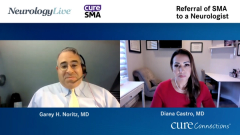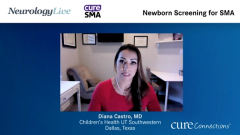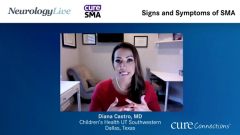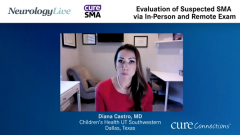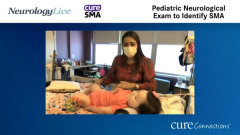
Evaluation of Suspected SMA via In-Person and Remote Exam
Diana Castro, M.D., stresses the value of the initial in-person neurology visit for evaluation of spinal muscular atrophy (SMA) to ensure a correct diagnosis. The next step in the process would be genetic testing.
Episodes in this series

Garey H. Noritz, MD: In addition to this challenge of trying to find a very rare disease, we’re trying to do this in the midst of the COVID-19 [coronavirus disease 2019] pandemic, where we’re doing some care by video and some care in person. I think there are some families who are reticent to come to the hospital at all. If you’re doing neurology by video, how do you do that? How do you get ready for that? I remember in medical school, one of the things I really liked was going to watch neurologists do examinations. That’s what you do and that’s what you’re great at, and you learn so much by watching an expert do it. How do you do it when all you have is your eyes?
Diana Castro, MD: I think that’s a great question. I have some colleagues who are seeing new patients through telehealth, and I respect that. My opinion is that if you have a new patient where you suspect a neuromuscular diagnosis, you should see that patient. It doesn’t matter if it’s a short visit. Obviously, it’s important that we make sure to control all the factors to try to avoid any kind of exposure. If you’re doing a first-time evaluation over video, there is not a good way to test, for example, reflexes. You’re not going to be able to test reflexes through video. You really have to feel that muscle and feel if it’s a hypotonic muscle or if it feels normal. Unfortunately, there are many things in neuromuscular exams that require you to be able to see that patient.
The follow-ups are different. Once you have the diagnosis or you’re suspecting your diagnosis, and SMA [spinal muscular atrophy] is definitely not one of them, it’s easier. It’s easier to do it through telehealth. I ask the parents to have their kid with them, and I try to observe as much as I can because a lot of what we do is observation. While I’m talking to the parents, I’m also looking at the kid. Many times, they are playing around or doing something, so I try to observe that. Then I ask the parents to do a couple of maneuvers that will help me follow up on the things that I’m looking for. For example: eye movements, facial expressions, raising their arms or legs, and other things like that.
Garey H. Noritz, MD: A lot of what we do is visual, but there is this tactile part to it that I don’t think you can replace. You can have the families replicate some of it, but I think it’s hard to do it. Let’s say you do end up doing an evaluation by telehealth, and from what you see, you are worried about SMA. What would you do next?
Diana Castro, MD: The next step will be getting the patient tested right away because we can send genetic testing. If that’s my suspicion, I’ll bring in the patient. If I’m seeing a first-time patient by telehealth and that is my suspicion, I will very likely bring the patient in the next day, and I will do the genetic testing right away. In the past, we had to do many other things to try to get to the diagnosis, but fortunately the genetic testing is available. It’s usually sponsored, so the families will not have to take on the cost and we don’t have to deal with insurance or preauthorization.
Garey H. Noritz, MD: Thank you for watching this NeurologyLive® Cure Connections® program. If you enjoyed the content, please subscribe to our e-newsletters to receive upcoming programs and other great content right in your inbox.
Transcript Edited for Clarity
Newsletter
Keep your finger on the pulse of neurology—subscribe to NeurologyLive for expert interviews, new data, and breakthrough treatment updates.


